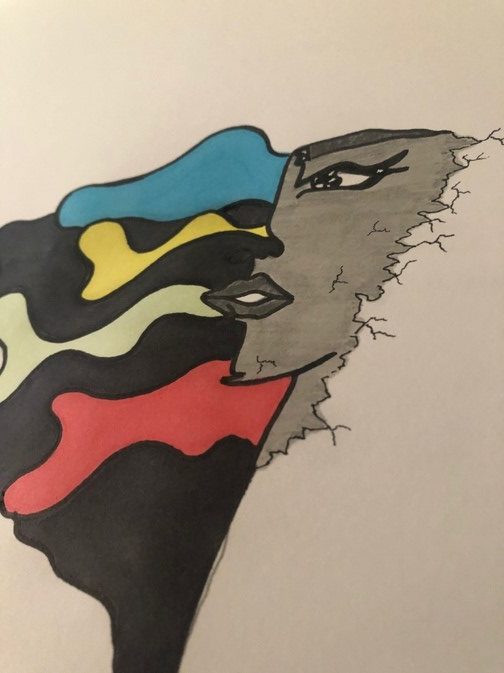We are delighted to introduce this guest blog post and artwork from teacher David Tidswell, who is clearly an insightful blogger and talented artist.

I use to run. I ran slowly, but I ran. As all runners do, I faced injury. I have bound my ankles and knees tightly to alleviate the strain on my joints. It worked. It worked so well that I could enjoy strapless strides for weeks…until I couldn’t anymore. When the pain reappeared I re-strapped. Re-strap, run, repeat…until again I couldn’t anymore. I never looked at where this pain was coming from, what was I doing wrong and how could I change? Covering up the injuries that were a symptom of bad technique not only ignored the cause but exacerbated it.
Schools can be like runners, clambering to cover up obvious injuries. We use the first-aid kit of policy and procedure to cover wounds that need air to heal. We don’t look at the root cause of problems. We don’t have the difficult conversations which need to be had. Why? For fear of conflict? For fear of discovering the truth of our organisational cultures? Nowhere is this more notable than dealing with bullying and incivility in our workplace.
Teaching is a person-centric profession and with people come relationships. The word relationship often brings with it connotations of companionship, friendship and support but relationships can be toxic. A toxic relationship is not only one between two people who don’t see eye to eye. Toxic relationships can exist between people who are friends. Toxicity can lie in the content of the conversation not the absence or presence of it. What do we talk about? Who do we talk about? Why do we talk about them? Are staffroom conversations to make the school better? Or are they just to make me feel better about my insecurities?
These are the questions we need to ask. These are the niggles that become injuries. These are the wounds we need to expose to the light of day. Facing down these questions requires will and strength from those involved. The answers that are revealed may not be what we want to see. Unknown answers are causes to unseen problems.
Bullying procedures can be a long and arduous chore for all involved. It is the steep incline on our run. Who will reach the top first? The bully or the bullied? It is on this incline where our injuries become most apparent. The knees ache and the ankle twinges. People on the side-lines tell us we must push through. No pain, no gain.
Organisations can often focus too much on the individual incidents of bullying, ignoring the complicated networks that cause them or the culture that underlies a casual sense of acceptance.
Let’s press the reset button. Let’s treat people like people. Let’s care for each other. Let’s support colleagues struggling not comment from afar. Let’s build the culture which will make these injuries a thing of the past. When these incidence occur, let’s not accuse but instead explore.
Beneath the plasters that hide the scars of workplace incivility lies the path to creating a better workplace: beneath the cracks, lie the colours.
Tear off the plaster. 3…2…1.
